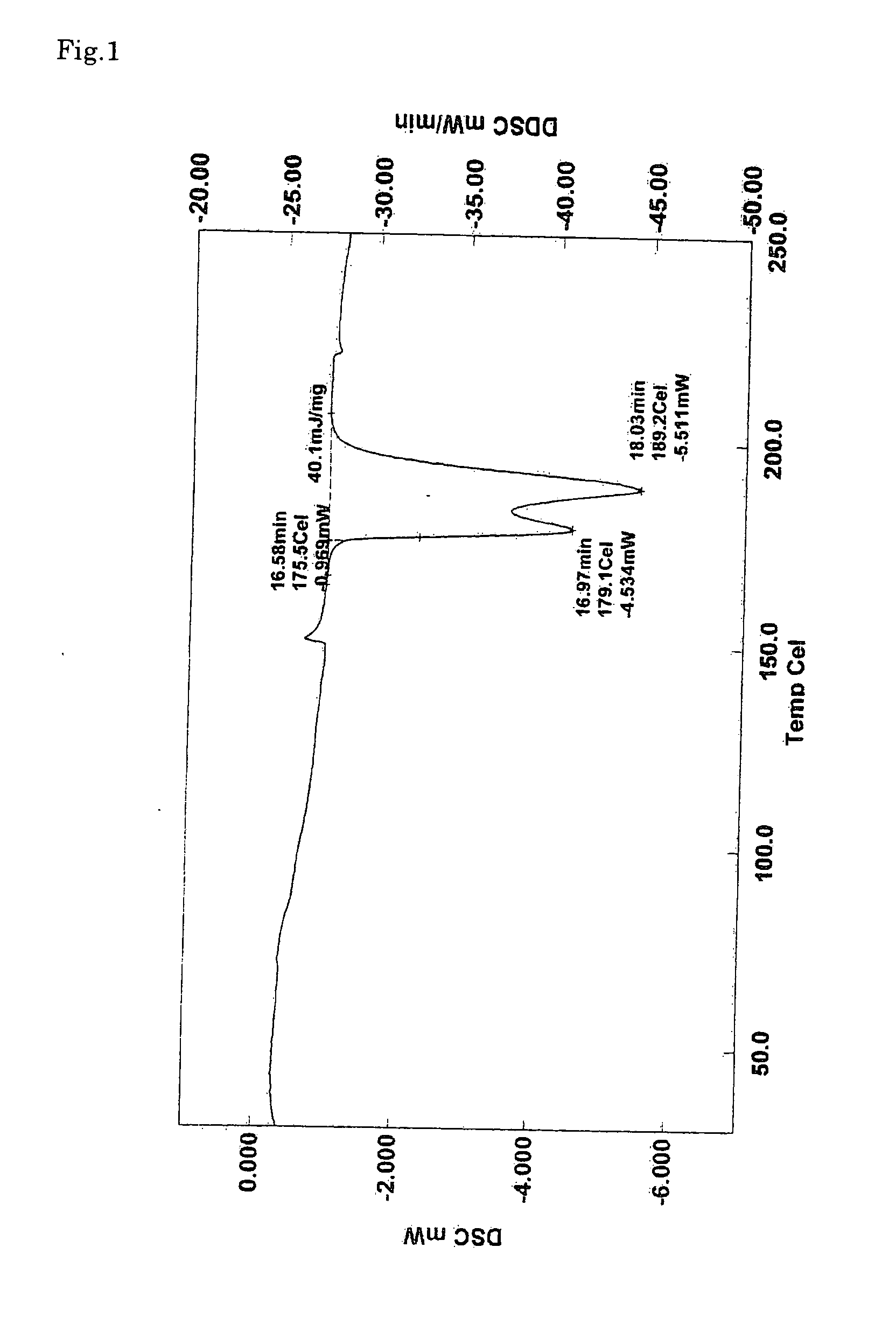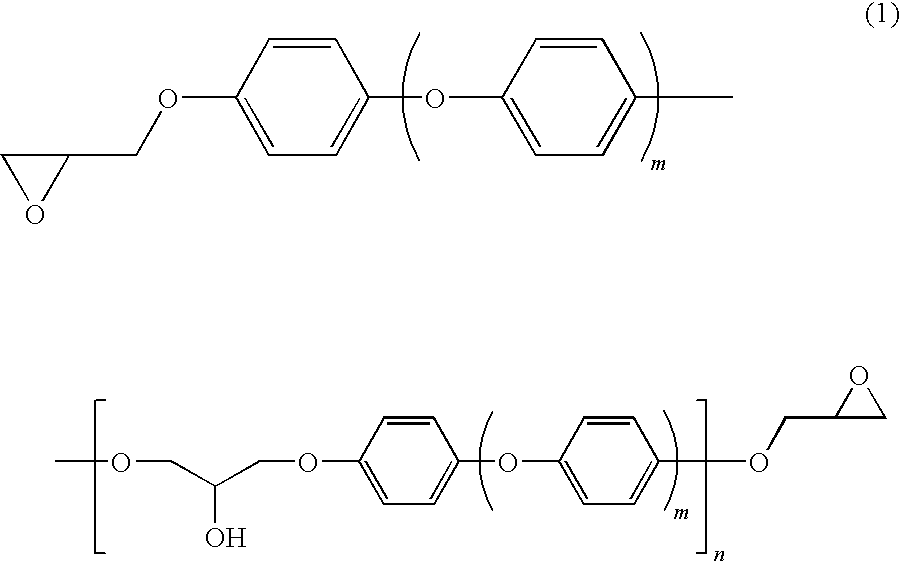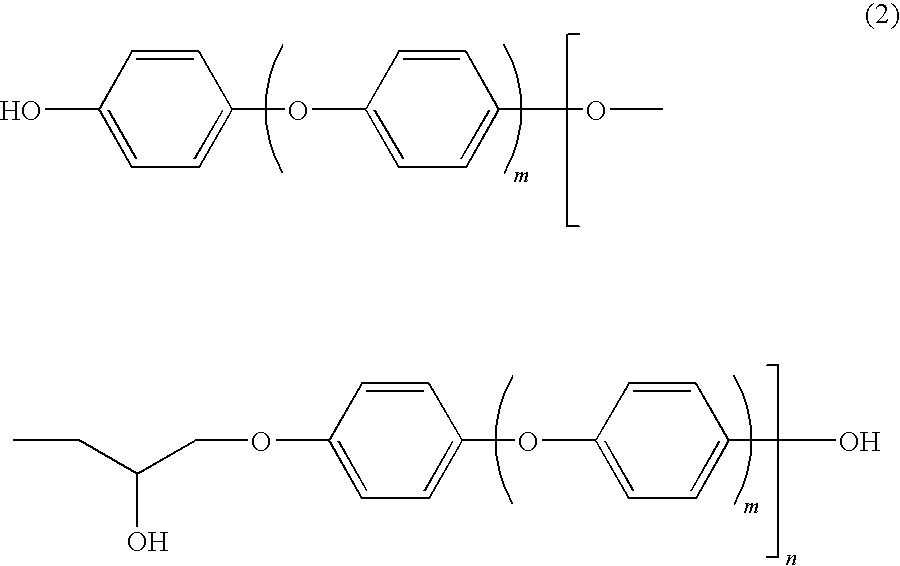Epoxy resin composition and cured article thereof
a technology of epoxy resin and composition, applied in the direction of solid-state devices, basic electric elements, semiconductor devices, etc., can solve the problems of increasing heat generation, poor solvent solubility, and difficult composition formulating, and achieve low thermal expansion, high thermal conductivity, and high heat dissipation efficiency
- Summary
- Abstract
- Description
- Claims
- Application Information
AI Technical Summary
Benefits of technology
Problems solved by technology
Method used
Image
Examples
reference example 1
[0051]To a solution of 1010 g of 4,4′-dihydroxydiphenyl ether in 7000 g of epichlorohydrin was added 808 g of a 48% aqueous solution of sodium hydroxide in drops at 60° C. under reduced pressure (at approximately 120 mmHg) over 4 hours. The water produced during this time was removed from the system by azeotropic distillation with epichlorohydrin and the distilled epichlorohydrin was returned to the system. The reaction was continued for another hour after completion of the dropwise addition. Thereafter, the reaction mixture was filtered to remove the salt formed washed with water, and distilled to strip off the epichlorohydrin to give 1515 g of crude epoxy resin as a light yellow liquid. The crude product showed an epoxy equivalent of 171 and a hydrolyzable chlorine content of 4500 ppm A solution of 1500 g of the epoxy resin thus obtained in 6000 ml of methyl isobutyl ketone was prepared 76.5 g of a 20% aqueous solution of sodium hydroxide was added to the solution, and the reactio...
reference example 2
[0052]A mixture of 163 g of the epoxy resin synthesized in Reference Example 1 and 25.3 g of 4,4′-dihydroxydiphenyl ether was prepared by melting the two together at 150° C., 0.075 g of triphenylphosphine was added to the mixture, and the reaction was allowed to proceed in a stream of nitrogen for 2 hours. Upon completion of the reaction, the reaction mixture was allowed to cool to room temperature and the product resin in the meantime became crystalline and solidified. The resin thus obtained Epoxy resin B) showed an epoxy equivalent of 261, a melting point of 100-122° C., a softening point of 127° C., and a viscosity of 0.037 Pa·s at 150° C. The resin analyzed by GPC showed the following distribution of n in general formula (1): n=0, 42.5%; n=2, 29.2%; n=4, 17.6%; and n≧6, 10.7%. The viscosity was determined with the aid of Rheomat 115 available from Contrabas Co., Ltd and the softening point was determined by the ring and ball method in accordance with JIS K-6911. The GPC analysi...
reference example 3
[0053]The reaction was carried out as in Reference Example 2 using 163 g of the epoxy resin synthesized in Reference Example 1 and 50.5 g of 4,4′-dihydroxydiphenyl ether. After the reaction was over, the reaction mixture was allowed to cool to room temperature and the resin in the meantime became crystalline and solidified The resin thus obtained Epoxy resin C) showed an epoxy equivalent of 482, a melting point of 145-165° C., and a softening point of 163° C. The resin was analyzed by GPC to show the following distribution of n in general formula (1): n=0, 16.7%; n=2, 22.1%; n=4, 32.1%; and n≧6, 29.1%.
PUM
| Property | Measurement | Unit |
|---|---|---|
| Nuclear radiation | aaaaa | aaaaa |
| Dimensional stability | aaaaa | aaaaa |
| Thermal conductivity | aaaaa | aaaaa |
Abstract
Description
Claims
Application Information
 Login to view more
Login to view more - R&D Engineer
- R&D Manager
- IP Professional
- Industry Leading Data Capabilities
- Powerful AI technology
- Patent DNA Extraction
Browse by: Latest US Patents, China's latest patents, Technical Efficacy Thesaurus, Application Domain, Technology Topic.
© 2024 PatSnap. All rights reserved.Legal|Privacy policy|Modern Slavery Act Transparency Statement|Sitemap



